Removal Procedure
- Disconnect the negative battery cable.
- Remove the engine front cover. Refer to Engine Front Cover Replacement .
- Remove the spark plugs. Refer to Spark Plug Replacement in Engine Controls - 2.5L.
- Rotate the crankshaft so that timing marks are aligned as shown in figure.
- Remove the left secondary timing chain. Refer to Secondary Timing Chain Replacement - Left Side .
- Remove the timing chain guides (3) and (4).
- Remove the timing chain tensioner adjuster (8).
- Remove the idler sprocket (11) and the primary timing chain (2).
- Remove the idler sprocket (7) and the sprocket shaft.
- Remove the timing chain tensioner (9).
- Remove the right primary timing chain camshaft sprocket bolt while holding the right intake camshaft (2) with a wrench.
- Remove the right primary sprocket (1) from the intake camshaft.
- Remove the primary timing chain crankshaft sprocket.
- Inspect the following components for wear and damage:
- Verify that the latch (1) and teeth (2) of the timing chain tensioner adjuster are undamaged and that the tensioner functions correctly.
- Replace any worn or damaged component.
Caution: Unless directed otherwise, the ignition and start switch must be in the OFF or LOCK position, and all electrical loads must be OFF before servicing any electrical component. Disconnect the negative battery cable to prevent an electrical spark should a tool or equipment come in contact with an exposed electrical terminal. Failure to follow these precautions may result in personal injury and/or damage to the vehicle or its components.
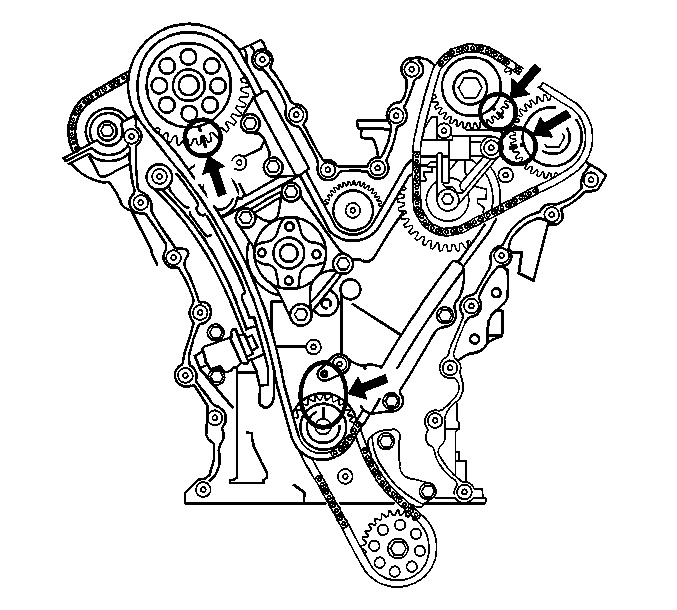
Notice: Avoid turning the camshafts and the crankshaft once the timing chain or timing chain tensioner is removed. Valve and piston damage may occur.
Important: The timing marks must be correctly aligned before disassembly in order to correctly install the timing chains.
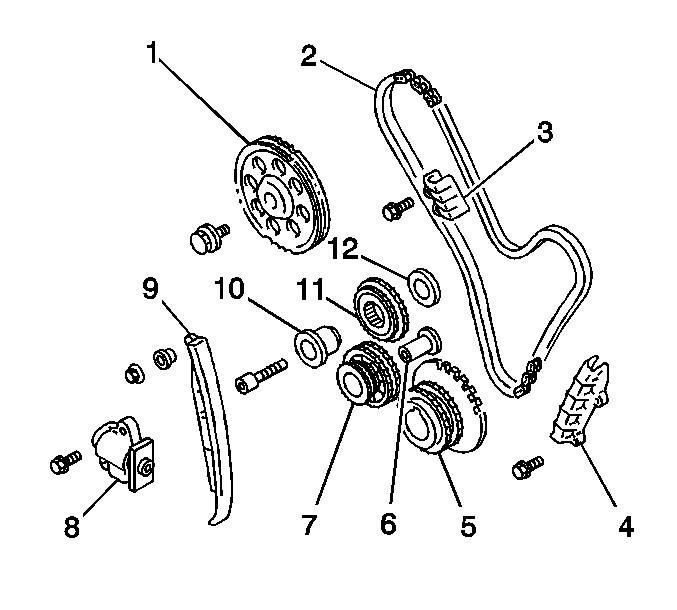
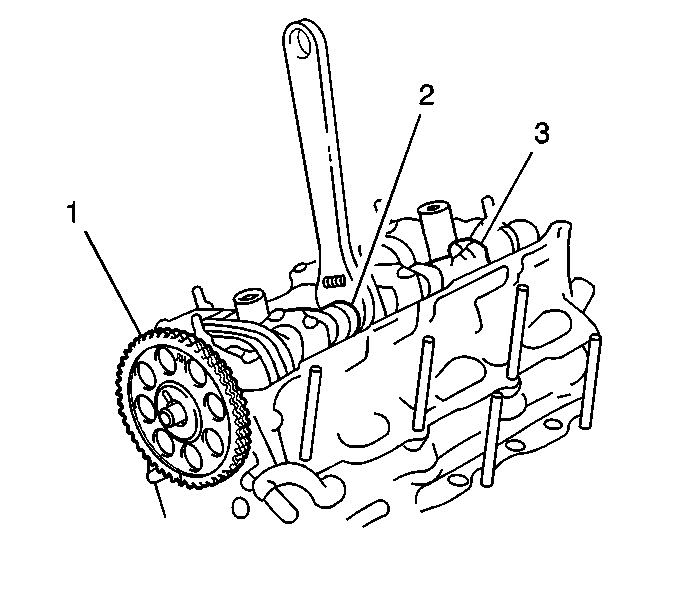
| • | The primary timing chain guides |
| • | The primary timing chain tensioner |
| • | The primary timing chain sprockets |
| • | The primary timing chain |
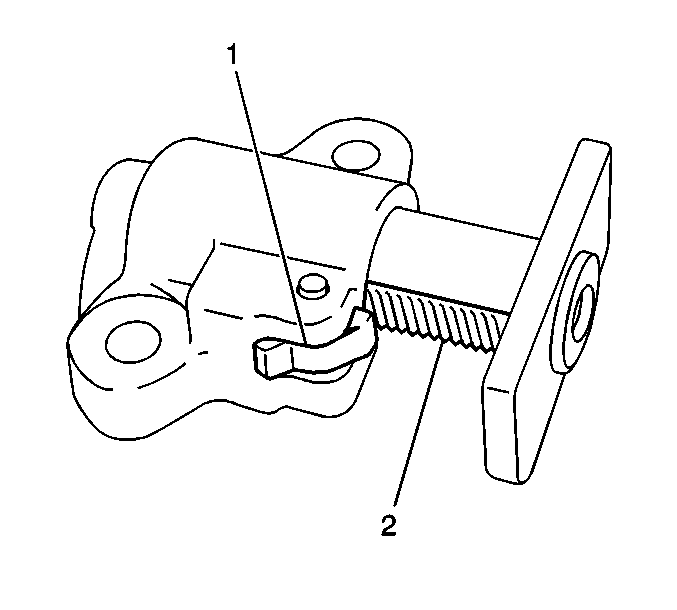
Installation Procedure
- Verify that the keyway (2) on the crankshaft is positioned properly.
- Install the crankshaft sprocket (2) to the crankshaft (1).
- Verify that the Knock-pin (1) on the right intake camshaft is aligned with the match mark (2).
- Install the right primary sprocket to the intake camshaft with the RH mark facing forward.
- Secure the sprocket (1) with the bolt while holding the intake camshaft (2) with a wrench.
- Install the timing chain tensioner (2). Secure with the nut.
- Install the primary timing chain to the primary right intake sprocket by aligning the right silver link (1) on the chain with the mark (2) on the sprocket.
- Apply oil to the inside of the idler sprocket and install the sprocket by aligning the left silver link (1) with the mark (2) on the idler sprocket.
- Install the primary timing chain to the crankshaft sprocket by aligning the yellow link (2) on the chain with the mark (3) on the sprocket.
- Apply oil to the bearing of the idler sprocket.
- Install the primary timing chain to the idler sprocket (1) and secure the sprocket to the engine block with the bolt.
- With the latch (2) of the tensioner adjuster returned and the plunger (3) pushed back into the body, insert a retainer (paper clip or similar tool) (1) into the set hole. After inserting the pin, make sure the plunger will not come out.
- Install the tensioner adjuster (1) to the engine block and tensioner. Secure with the 2 bolts.
- Remove the retainer (3) from the tensioner.
- Install the timing chain guides (1,3).
- Verify that each timing mark is aligned properly.
- Install the left secondary timing chain and tensioner. Refer to Secondary Timing Chain Replacement - Left Side .
- Install the engine front cover. Refer to Engine Front Cover Replacement .
- Install the spark plugs. Refer to Spark Plug Replacement in Engine Controls - 2.5L.
- Connect the negative battery cable.
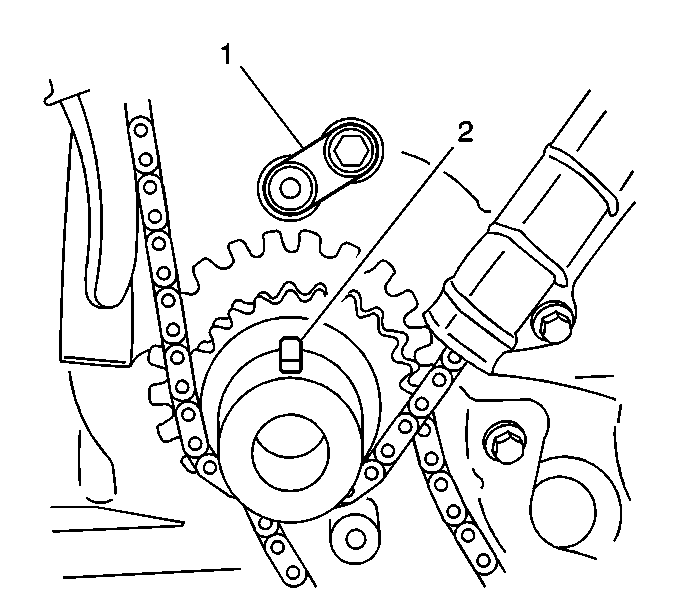
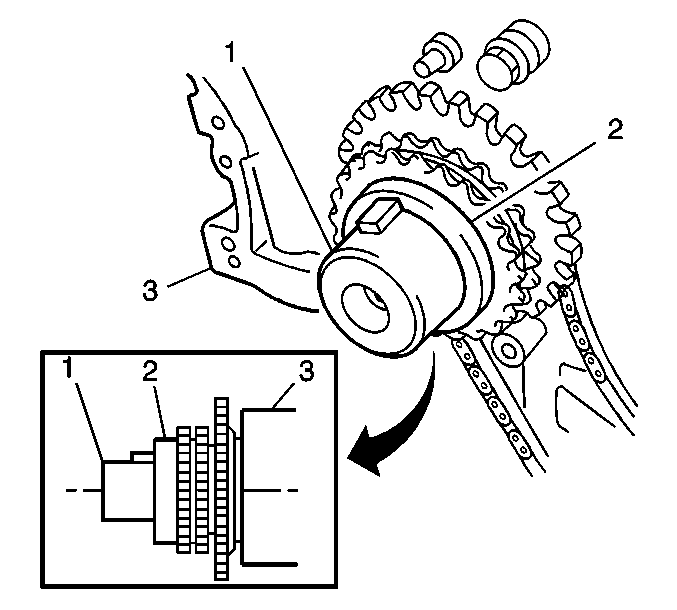
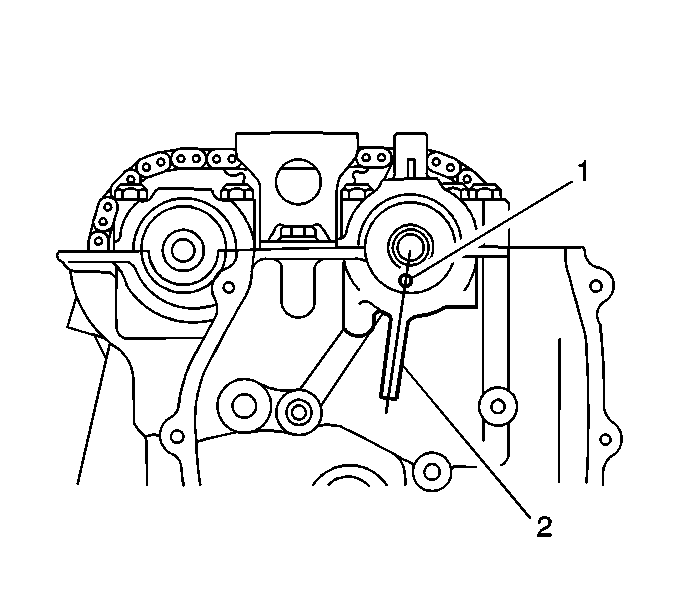

Notice: Use the correct fastener in the correct location. Replacement fasteners must be the correct part number for that application. Fasteners requiring replacement or fasteners requiring the use of thread locking compound or sealant are identified in the service procedure. Do not use paints, lubricants, or corrosion inhibitors on fasteners or fastener joint surfaces unless specified. These coatings affect fastener torque and joint clamping force and may damage the fastener. Use the correct tightening sequence and specifications when installing fasteners in order to avoid damage to parts and systems.
Tighten
Tighten the bolt to 80 N·m (57.5 lb ft).
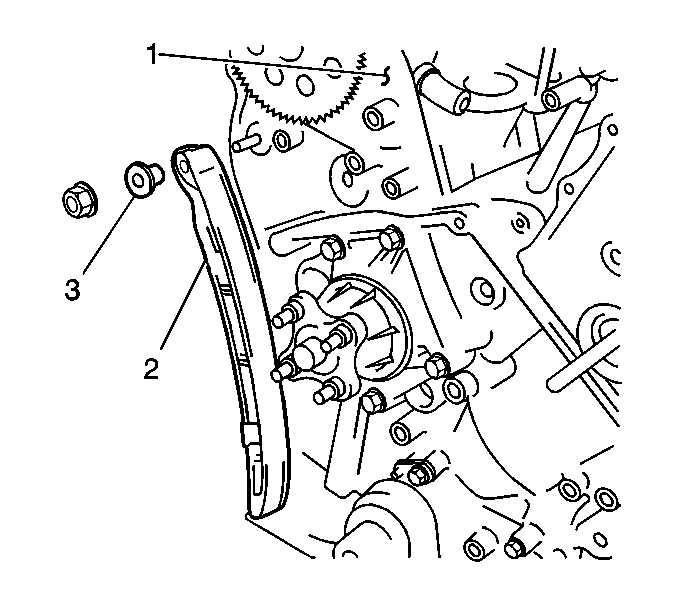
Tighten
Tighten the nut to 27 N·m (19.5 lb ft).
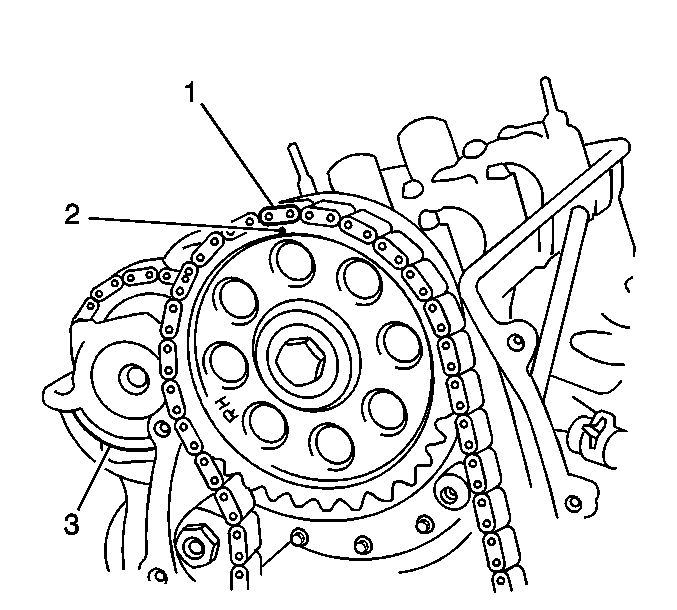
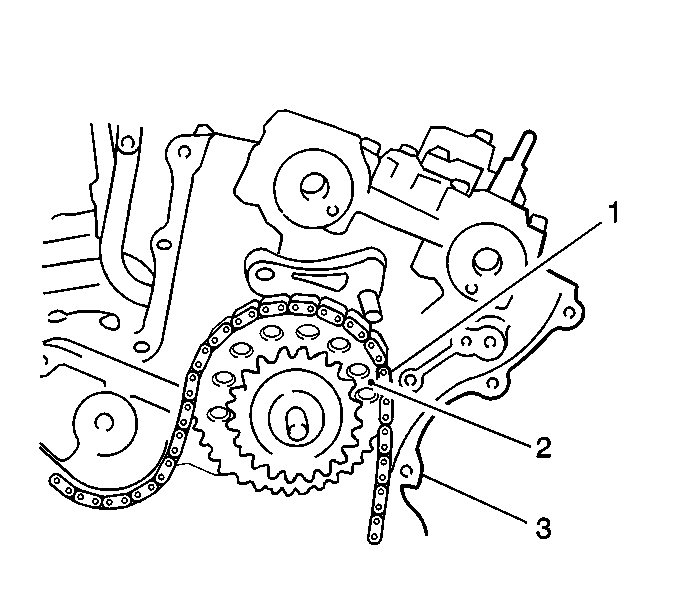
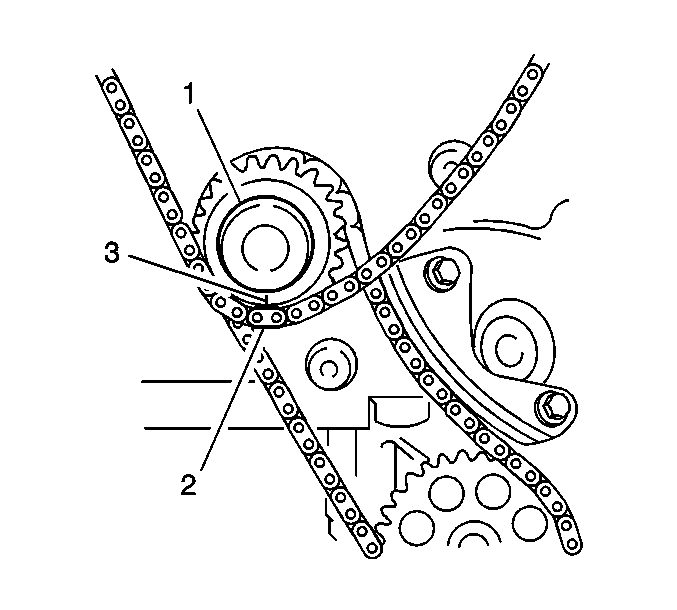
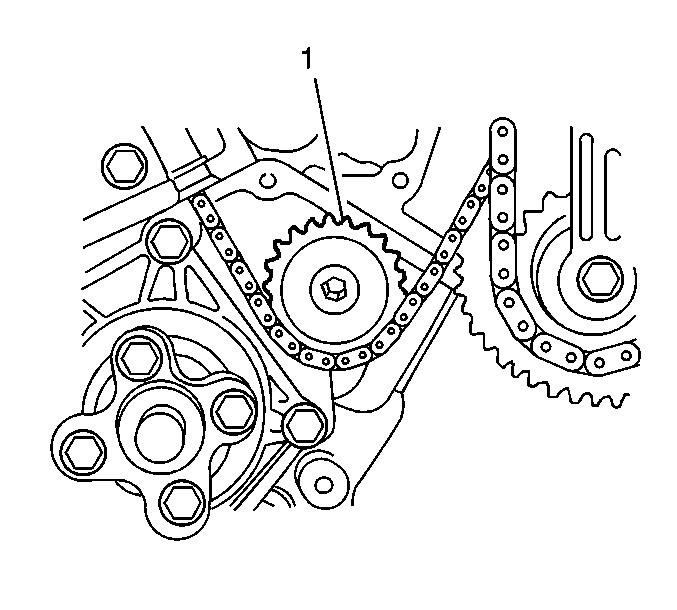
Tighten
Tighten the bolt to 45 N·m (32.5 lb ft).

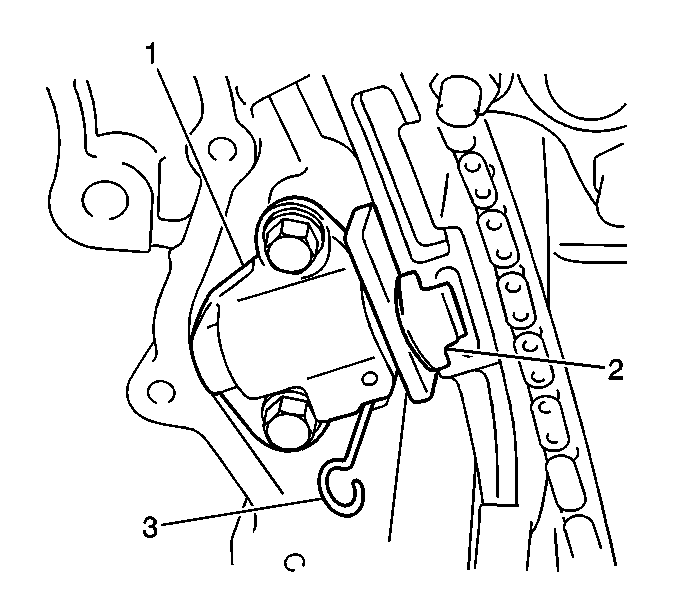
Tighten
Tighten the bolt to 11 N·m (7.5 lb ft).
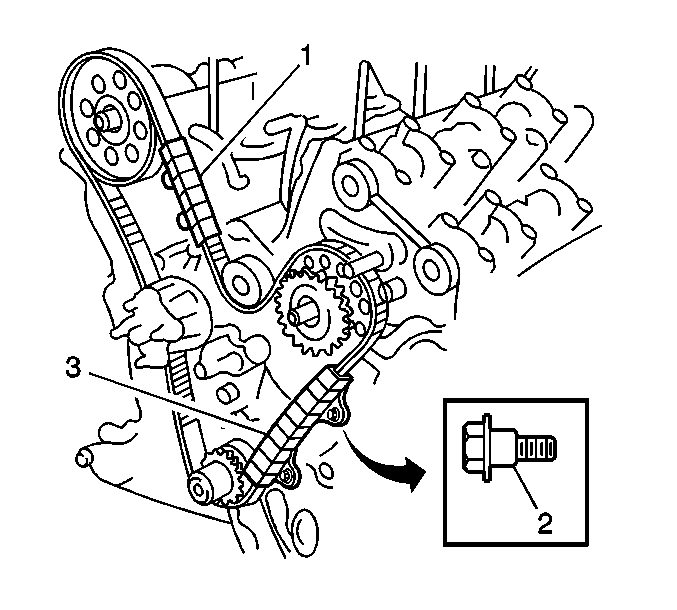
Tighten
Tighten the bolts to 9 N·m (6.5 lb ft).

